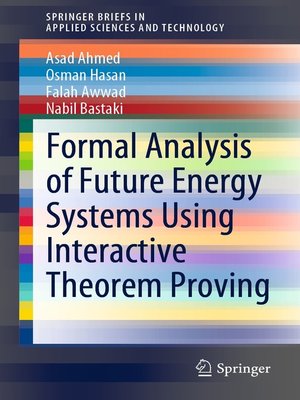Formal Analysis of Future Energy Systems Using Interactive Theorem Proving
ebook ∣ SpringerBriefs in Applied Sciences and Technology
By Asad Ahmed

Sign up to save your library
With an OverDrive account, you can save your favorite libraries for at-a-glance information about availability. Find out more about OverDrive accounts.
Find this title in Libby, the library reading app by OverDrive.



Search for a digital library with this title
Title found at these libraries:
| Library Name | Distance |
|---|---|
| Loading... |
This book describes an accurate analysis technique for energy systems based on formal methods—computer-based mathematical logic techniques for the specification, validation, and verification of the systems.
Correctness and accuracy of the financial, operational, and implementation analysis are of the paramount importance for the materialization of the future energy systems, such as smart grids, to achieve the objectives of cost-effectiveness, efficiency, and quality-of-service. In this regard, the book develops formal theories of microeconomics, asymptotic, and stability to support the formal analysis of generation and distribution cost, smart operations, and processing of energy in a smart grid. These formal theories are also employed to formally verify the cost and utility modeling for:
The proposed approach results in mechanized proofs for the specification, validation, and verification of corresponding smart grid problems. The formal mathematical theories developed can be applied to the formal analysis of several other hardware and software systems as well, making this book of interest to researchers and practicing engineers in a variety of power electronic fields.







